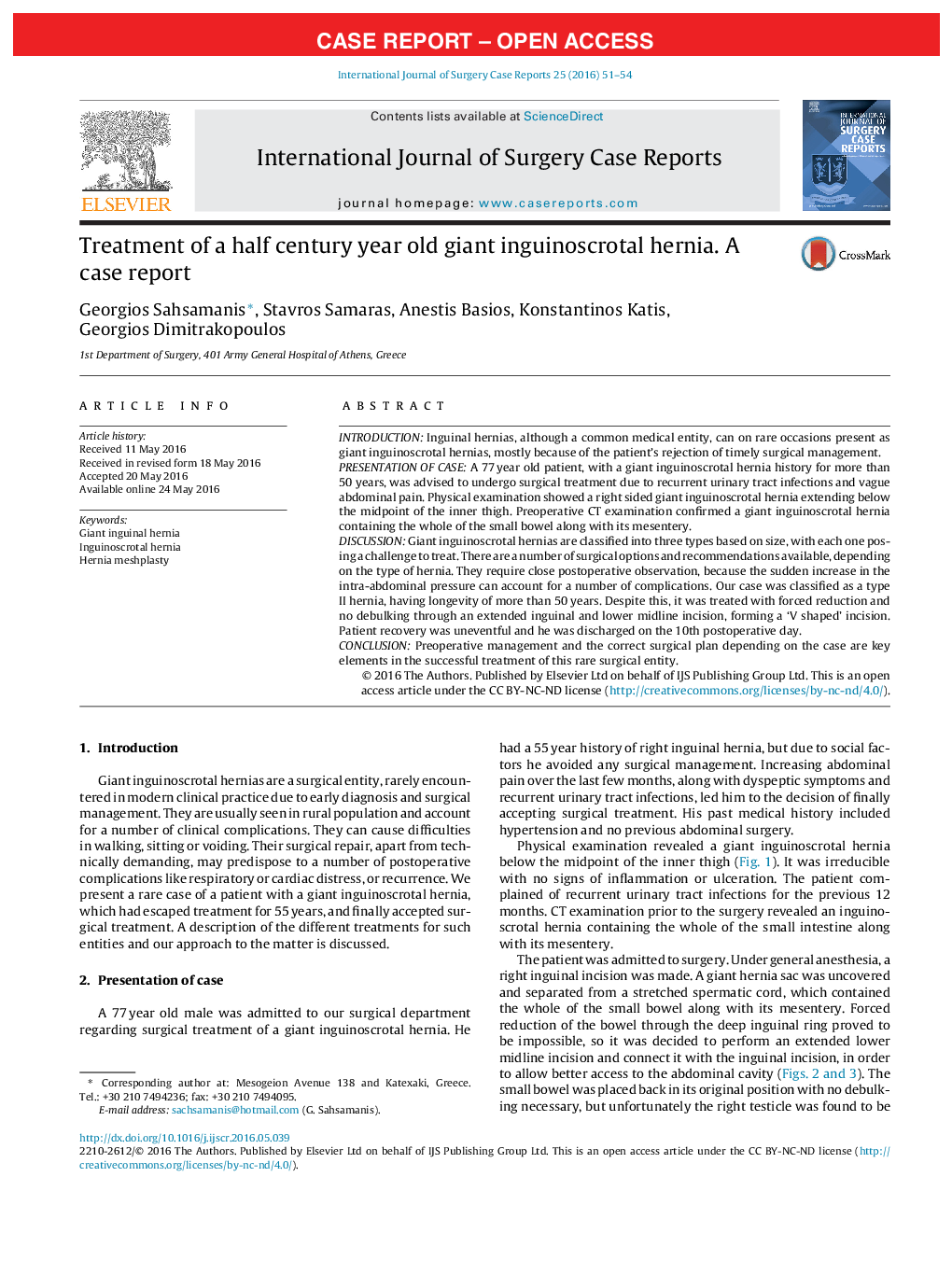| Article ID | Journal | Published Year | Pages | File Type |
|---|---|---|---|---|
| 4288405 | International Journal of Surgery Case Reports | 2016 | 4 Pages |
•Giant inguinoscrotal hernias are a rare entity in modern clinical practice mainly because of the patient’s neglect.•Our patient had a type II giant inguinoscrotal hernia extending below the midline between mid-inner thigh and suprapatellar bone lines.•We avoided preoperative or intraoperative procedures for the lengthening of the abdominal wall.•Despite the longevity and size of the hernia, we avoided a debulking procedure, instead we performed a lower midline incision and connected it with an extended right inguinal incision.•Patient’s recovery was uneventful with no complications or signs of recurrence at 6 month follow up.
IntroductionInguinal hernias, although a common medical entity, can on rare occasions present as giant inguinoscrotal hernias, mostly because of the patient’s rejection of timely surgical management.Presentation of caseA 77 year old patient, with a giant inguinoscrotal hernia history for more than 50 years, was advised to undergo surgical treatment due to recurrent urinary tract infections and vague abdominal pain. Physical examination showed a right sided giant inguinoscrotal hernia extending below the midpoint of the inner thigh. Preoperative CT examination confirmed a giant inguinoscrotal hernia containing the whole of the small bowel along with its mesentery.DiscussionGiant inguinoscrotal hernias are classified into three types based on size, with each one posing a challenge to treat. There are a number of surgical options and recommendations available, depending on the type of hernia. They require close postoperative observation, because the sudden increase in the intra-abdominal pressure can account for a number of complications. Our case was classified as a type II hernia, having longevity of more than 50 years. Despite this, it was treated with forced reduction and no debulking through an extended inguinal and lower midline incision, forming a ‘V shaped’ incision. Patient recovery was uneventful and he was discharged on the 10th postoperative day.ConclusionPreoperative management and the correct surgical plan depending on the case are key elements in the successful treatment of this rare surgical entity.
